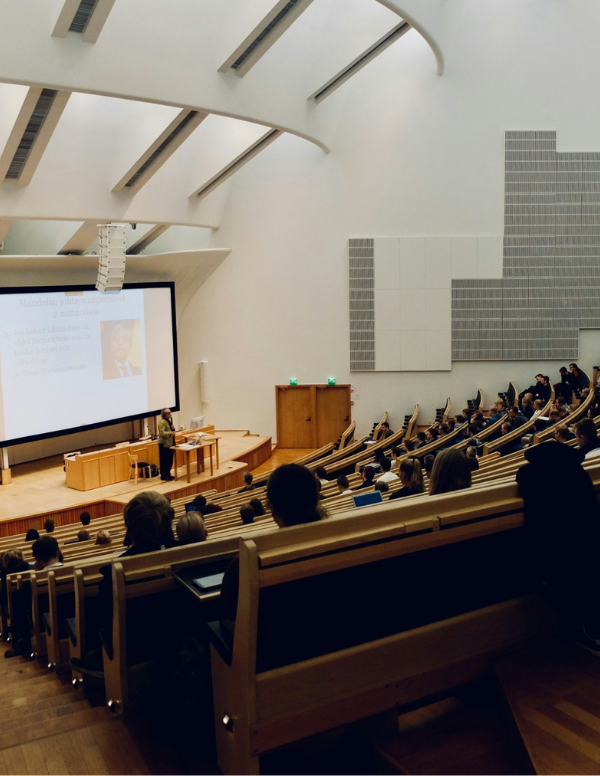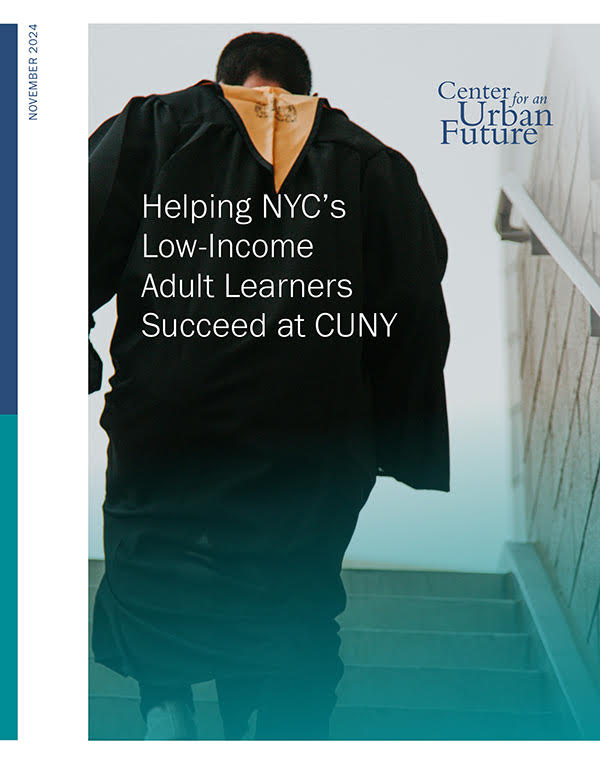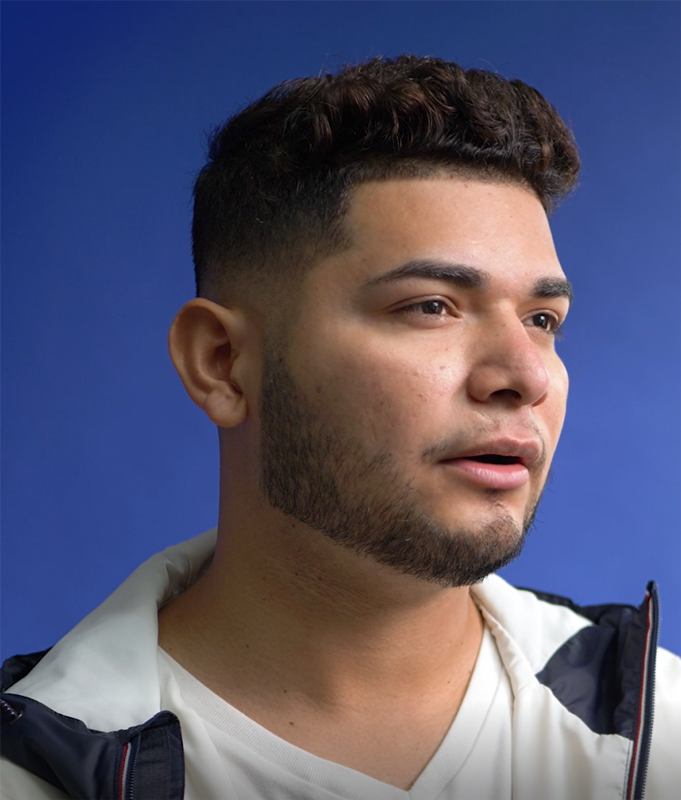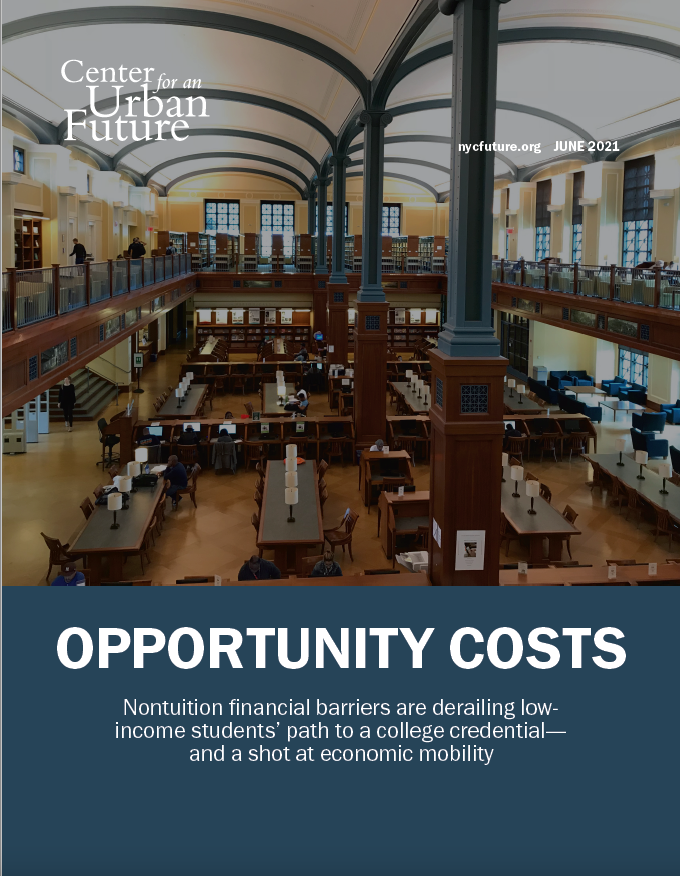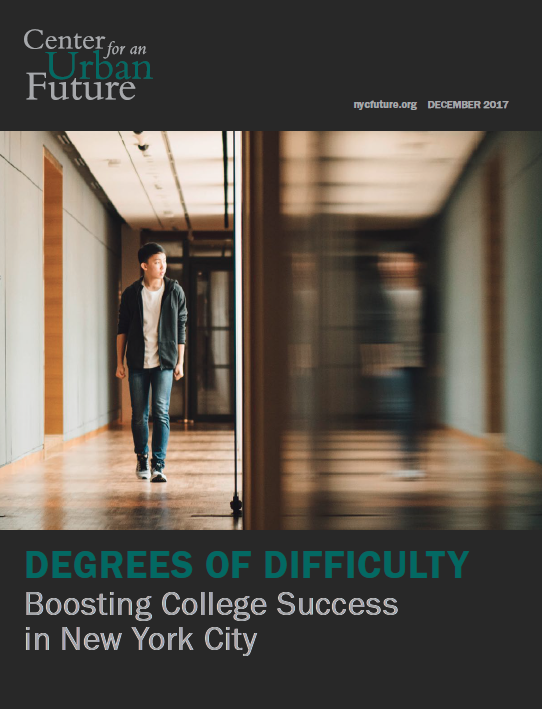Playing New York City’s ACE Card: Expanding Economic Mobility by Scaling CUNY’s Small but Powerful Accelerate, Complete, Engage (ACE) Program
Few student success programs nationally have been as effective as CUNY’s Accelerated Study in Associate Programs (ASAP) initiative, which has more than doubled timely graduation rates for students enrolled in associate’s degree programs. The program’s phenomenal success has led to increased funding from city policymakers, enabling the once-small ASAP initiative to grow to a level where it now serves 25,000 community college students across the five boroughs.
It's now time to ramp up similar efforts for students attending CUNY’s four-year colleges. Indeed, although CUNY’s senior colleges post higher graduation rates, their students also struggle with college success—with the greatest challenges typically facing students with the fewest resources. Just 36.2 percent of full-time, first-time bachelor’s degree-seeking students at CUNY senior colleges graduate in four years; for Black and Hispanic students, the four-year graduation rate is 27.5 percent. For Black men, the graduation rate is 17.8 percent. Four-year graduation rates range from 57.5 percent at Baruch College to 16.1 percent at Medgar Evers and just 7.3 percent at City Tech.1
CUNY has a promising program modeled on ASAP that is helping students complete their bachelor’s degrees on time. Like ASAP, the Accelerate, Complete, and Engage (ACE) program, launched in 2015, provides students attending CUNY’s senior colleges with a mix of services and financial help that has proven to be critical in helping the university’s mostly low-income students persist in college and earn a credential: intensive academic advisement, career development, tuition scholarships, textbooks, and transportation assistance.
Also like ASAP, the ACE program is already proving remarkably successful. According to a recent evaluation, four-year graduation rates among ACE students at John Jay College were 16 percentage points higher than among the comparison group: 58.4 percent compared to 42.1 percent—an increase of nearly 39 percent.2 Subsequent cohorts have registered similarly impressive results. Importantly, the data also shows that ACE has benefited all subgroups of students, narrowing achievement gaps by ethnicity and race.
But the ACE program has considerable room to grow. Just 2,800 students have participated in the ACE program since 2015, according to CUNY’s August 2022 ACE Evaluation Brief—a tiny fraction (3 percent) of the 93,305 students enrolled full-time in baccalaureate programs at CUNY’s senior colleges.
Through the support of the NYC Juneteenth Economic Justice Plan announced in June 2021, ACE has expanded to four additional CUNY colleges in the spring and fall of 2022: College of Staten Island, New York City College of Technology, York College, and Queens College. In total, the mayor and City Council allocated $8.26 million to support ACE in FY 2023, enabling the program to support about 2,880 students this year. But while this city funding has provided an important boost to the program, this is still a drop in the bucket.
At a time when a college credential has become increasingly critical to accessing well-paying jobs, but when far too many of those entering CUNY’s four-year schools are leaving without a degree, New York City and State leaders should greatly scale up the ACE program. By growing CUNY ACE to reach the same share of students as are currently served by CUNY ASAP, New York would help 4,700 more students achieve bachelor’s degrees over five years—generating an additional $5.17 billion in lifetime earnings.3
As city and state leaders examine ways to help more New Yorkers get ahead in a fast-changing economy, policies that can help boost bachelor’s degree attainment are uniquely well positioned to drive impact.
In New York City’s economy today, a bachelor’s degree continues to provide a major wage premium and opens the door to substantially higher lifetime earnings. The Center for an Urban Future’s analysis of job postings data from labor-market analytics firm Lightcast finds that 61 percent of jobs posted in New York City in 2022 required a bachelor’s degree—and that these jobs offer a median starting salary of $79,800, 86 percent higher than those jobs that require only a high school diploma ($42,900). New Yorkers with bachelor’s degrees can expect to earn over $1.6 million more over a lifetime than workers with only a high school diploma.4
The problem is that New York City continues to experience stark disparities in bachelor’s degree attainment. As of 2021, just 24.8 percent of Hispanic New Yorkers, 30.2 percent of Black New Yorkers, and 49.3 percent of Asian New Yorkers hold a bachelor’s degree or higher, compared to 67.8 percent of white New Yorkers, according to our analysis of Census data on educational attainment for across the five boroughs among residents ages 25 to 64. In Downtown Brooklyn / Brooklyn Heights, 74.6 percent of residents ages 25 to 64 hold a bachelor’s degree or higher, and the median household income exceeds $125,000. Seven miles away in East New York, just 18.9 percent of residents ages 25 to 65 have at least a bachelor’s degree, and the median household income is $43,500.
Changing this will require a multifaceted approach, including new policies and investments that help families save for college, support K-12 programs focused on boosting college readiness, expand the innovative CUNY Reconnect program aimed at working adults, and scale up peer and intergenerational mentorship programs. However, no option offers policymakers the chance to achieve greater impact at scale than investing in the evidence-backed college success programs that are already in place at the City University of New York (CUNY).
Evidence shows that CUNY provides New York City with its most reliable and equitable springboard to the middle class. CUNY is the largest urban public higher education system across the United States, with more than 222,000 degree-seeking students currently enrolled. More than 80 percent of freshmen are New York City public school graduates, nearly three-quarters are people of color, and more than 80 percent of CUNY alumni stay in the city after graduation, contributing to all aspects of the city’s civic and economic life. Crucially, CUNY consistently ranks among the top university systems in the nation with the greatest success in lifting low-income students into the middle class.
However, these transformative economic mobility gains are only possible if students are able to earn a degree—in particular, a bachelor’s degree. And while CUNY has made important strides in boosting on-time graduation rates in recent years, significantly more progress is needed.
Fortunately, CUNY has already launched a promising program to help students earn their bachelor’s degrees on time. The Accelerate, Complete, Engage (ACE) program, which launched in 2015 at the John Jay College of Criminal Justice through the support of Robin Hood, provides students with comprehensive academic and financial support to help students overcome the most common barriers to degree completion. The ACE program is already proving to be remarkably successful in boosting graduation rates, particularly for Black and Hispanic students. According to a recent evaluation by CUNY, four-year graduation rates among ACE students at John Jay College were 17.6 percentage points higher than among the comparison group: 59 percent compared to 41.5 percent. The effect was even more pronounced for Black and Hispanic students, who registered bachelor’s degree attainment rates that were 21.7 and 19.2 percentage points higher respectively, narrowing or even eliminating racial equity gaps.5
The ACE model has also been adapted to support associate degree–holding transfer students to ensure timely graduation. Early evidence for this model is promising: Lehman College's fall 2020 ACE transfer cohort demonstrated a two-year graduation rate of 64.9 percent. By comparison, for Lehman advanced standing transfer students with an associate degree admitted in fall 2020, only 32.2 percent graduated after two years.
“When students graduate, they're telling us, ‘I couldn't have done it without ACE,’” says DeLandra Hunter, who directs the ACE program at John Jay College. “‘There is no way I would have completed this degree. I would not have been able to maintain my classes if I didn't have the opportunity to sit down with an advisor to give me strategies about how to navigate college.’ They're telling us that it is making an impact.”
But despite the program’s clear promise, CUNY ACE has considerable room to expand. As of spring 2022, the program has only served 2,800 students since 2015 and has the capacity currently to serve about 2,880 students annually going forward—just 3.1 percent of the approximately 93,300 full-time students seeking bachelor’s degrees at CUNY’s senior colleges (and only 4.9 percent of students enrolled in the colleges where ACE is currently available).6 The program is offered at just six colleges—College of Staten Island, John Jay College, Lehman College, New York City College of Technology, Queens College, York College—which leaves students at Baruch College, Brooklyn College, Hunter College, Medgar Evers, and City College unable to access the program.7
ACE is a replication of CUNY’s nationally recognized Accelerated Study in Associate Programs initiative, which provides students enrolled in associate degree programs with the same comprehensive academic, professional, and financial support. ASAP dramatically increased the number of New Yorkers graduating from CUNY community colleges with associate degrees on time. To date, the ASAP average three-year graduation rate is 49.9 percent. Based on an experimental internal evaluation, CUNY found that the most recent ASAP three-year graduation rate of 53 percent is more than double the 25 percent rate of the statistically matched comparison group. The program's early success led to more investment from New York City government, which enabled the program to grow from about 4,000 students in 2014 to approximately 25,000 students each year since 2018.8
Education experts say that now is the time to follow the groundbreaking model established by ASAP once again, and accelerate the scaling up of CUNY ACE.
“Policymakers don’t understand how special ASAP and ACE are,” says Kelly McManus, director of higher education at Arnold Ventures, a philanthropic organization that funds evidence-backed success programs and has funded a randomized controlled trial of CUNY ACE. “They don't understand how rare it is to find a program that works and works so successfully across so many adaptations and replications. The reality is that this is a program that consistently changes lives, that consistently sets up people for success after college, and that consistently builds the economic mobility and stability of the region. And it’s worth investing in it.”
Comprehensive supports combined with hands-on advising make ACE remarkably effective at boosting student success.
ACE is a comprehensive program that helps CUNY students overcome the most significant barriers to degree completion. These needs are particularly acute at CUNY, where more than half of all students come from a household with an annual income of less than $30,000.9 At CUNY’s senior colleges, as of fall 2019, 58 percent were first-generation college students and 57 percent worked a job in addition to school, the majority of whom worked in excess of 20 hours per week—the level at which research shows that academic momentum can suffer.10
CUNY’s ACE program addresses many of these challenges through a unique combination of personal, academic, and financial supports. These supports include financial resources (tuition waivers for students whose financial aid fails to cover the full cost of tuition, textbook assistance, and free MetroCards); structured pathways to support academic momentum (full-time enrollment, block scheduled first-year courses, winter and summer course-taking); and comprehensive direct support services (personalized advisement, tutoring, and career development services).
The model aims to provide students with the opportunity to focus on school without having to worry about other issues. Research has shown that for students to succeed at college, they need regular access to a mentorship and advising, a sense of belonging at the school, and the supports needed to maintain academic momentum.
“What makes ACE unique is the comprehensiveness of strategies that work,” says Himani Gupta, director for research and evaluation of CUNY ASAP and ACE. “The dedicated advisor stays with you through the duration of the program. The financial benefits are beyond just tuition: the textbooks, the transportation benefits. It’s really addressing barriers from a lot of different angles that many other programs do not do.”
ACE students and graduates say that the heart of the program is the advising and the sense of belonging generated by the cohort system that is built into the model. College is a drastically different and more challenging experience than high school, even as many of the supports available in high school are stripped away, say experts in college persistence and completion. It’s easy for students to arrive and feel lost. Not only do students have to maneuver through the bureaucratic environment of college, for many CUNY students that are first generation college students, they have to navigate this complex system on their own.
Seema Ramdat, 21, is preparing to graduate from John Jay in May 2023. As the first person in her family to finish college, she says the college-going experience was filled with challenges—but that the ACE program helped her achieve her goals.
“There's no one in my family who has a bachelor's degree and I know the power that a bachelor's degree holds,” Ramdat says. Her sister, six years her elder, had to drop out of school because it became increasingly difficult for her to afford the costs of tuition, transportation, and textbooks. When she arrived at John Jay, Ramdat knew of the challenges she would face as a daughter from an undocumented household. Her parents couldn’t provide her guidance when applying to college or registering for classes. They didn’t have the money to help offset the costs of attendance. “I really do have to make it myself. And I used to think I would have to work 10 times harder,” she says. “But in the ACE program, they take that burden off.”
With ACE, students are matched with an advisor that sticks with them from enrollment through graduation. The support of an ACE advisor extends well beyond helping students register for classes. Advisors help students identify and then chart the most efficient pathway to a chosen degree; navigate the complex web of available city, state, and federal programs that can help students with basic needs and other costs; and explore opportunities for personal and professional development outside the classroom.
“It's the same person every month who knows your story, who knows your background, who's developed the relationship with you,” says Xenia Machado-Jacques, an ACE academic advisor at John Jay. “There are so many students who don't have that one-on-one, personalized, intentional, holistic advising, and it really makes a difference.”
In addition to the one-on-one monthly appointments with their advisors, ACE students at John Jay are also required to attend a monthly seminar that brings together other members of their ACE cohort to talk through topics ranging from transitioning to college life and structuring a class schedule to formulating a plan for graduate school and accessing internships and other work-based learning opportunities. The support that students provide one another, experts say, is an important element of what makes the program so effective—and helps foster more equitable outcomes.
In addition to a dedicated academic advisor, students are supported by a career development specialist who sets them up on a pathway to ensure that each student’s academic pursuits are strongly aligned with their emerging career interests. That means working to establish early on the purpose of their classes, and ultimately their degrees, beyond simply achieving satisfactory grades and earning credits.
Outside of the ACE program, very few students receive this type of individualized support. “No one's really talked to them about why they're there, and no wonder they're not persisting,” says Stephanie Fiorelli, deputy director of alumni success at the Urban Assembly, a nonprofit focused on supporting economic and social mobility through public education. “When you're in a philosophy classroom and you're not seeing the connection between this and your career, it's really hard to stay determined in that class.” The way to bridge that gap, says Fiorelli, is through consistent career advising that helps students discover how their academic experiences map onto their future career aspirations.
Yasmin Damblu Tavarez, 25, participated in the ACE pilot cohort at John Jay in 2015. She grew up in Brownsville with her mom, her twin sister, and two older brothers. College had long been part of her plan, but she wasn’t sure how she would get through it. “College was difficult and I didn’t expect to do well, especially my first year,” she says. “But it means a lot to me. I’m the only one who completed school.”
Damblu Tavarez says that in addition to her own hard work, the supports provided by the ACE program played an essential role in her success. She was paired with an advisor during orientation, and during monthly meetings over the following years, they sketched out a plan together that ultimately led her toward a master’s in social work and her current career. “It helped me find my way to social work and [my advisor] inspired me to go get my masters,” Damblu Tavarez says. “[The program] made a huge, huge impact on me being able to get to college and succeed.”
Another core component of the ACE model is financial support. As of Fall 2019, 57.9 percent of eligible CUNY students enrolled in senior colleges are Pell Grant recipients, meaning they have demonstrated exceptional financial need, and roughly two-thirds of undergraduates attend college tuition-free. The problem is that students face an onslaught of non-tuition financial barriers related to college attendance—including books, technology, transportation, childcare, and more—costs that typically far exceed the total financial aid that students receive.11
The ACE program helps to reduce these stressors by providing students with the financial support needed to offset these costs, enabling students to concentrate on their studies. ACE participants receive a stipend for their textbooks and academic materials each semester—which can cost several hundred dollars—as well as an unlimited MetroCard that helps students avoid having to decide whether they can afford to travel to campus, their off-campus jobs, or an internship, or whether they might instead consider risking fines and even arrest by jumping a turnstile. Students also receive tuition support to cover any shortfall between their financial aid package and the full cost of tuition—a benefit that applies if they receive “even one dollar of financial aid,” says Hunter from John Jay.
Building on ASAP’s Success at CUNY’s Four-Year Colleges
Approximately 25,000 students each academic year benefit from participation in the CUNY ASAP initiative, which is succeeding in more than doubling graduation rates at CUNY’s community colleges through a mix of hands-on advising, peer mentorship, academic counseling, and financial supports. Thousands of those students will then go on to transfer to a senior college in pursuit of a bachelor’s degree—and with it, opportunities to access more career paths and earn significantly higher lifetime wages.
The problem is that the key supports provided by ASAP fall away when students transfer out of a community college, which contributes to concerningly low graduation rates for CUNY’s transfer students. About half of all full-time students pursuing bachelor’s degrees are transfer students, but their graduation rates show room for improvement. Among students who transferred into a baccalaureate program, fewer than two-thirds (62.7 percent) earned a degree within six years. For Black men, the graduation rate falls to just 51.4 percent.
To make New York City’s investment in ASAP as effective as possible, these supports will need to continue even after students make the switch into a senior college. Fortunately, the ACE program does exactly that—and has already proven successful in increasing retention rates for transfer students continuing on to a bachelor’s degree after earning an associate’s degree at one of CUNY’s community colleges.
ACE for associate degree–holding transfer students has been implemented at Lehman College, College of Staten Island, York College, Queens College, and New York City College of Technology (City Tech) through funding from the city’s 2021 Juneteenth Economic Justice Plan. At City Tech ACE, retention rates for ACE students enrolled in the spring 2022 stood at 94 percent, according to Kwesi Samuels, the school’s ASAP and ACE director. This compares to just 84 percent for the overall transfer population at the college. Most of the ACE students at City Tech had been a part of ASAP while pursuing their associate’s degrees, and a seamless transition into ACE helped them persist.
In addition, CUNY’s most recent evaluation of the ACE program observed that a disproportionate share of students transferring from associate’s to bachelor’s degree programs were Black. “This indicates that, due to a number of structural and systemic barriers, Black students are more likely to rely on the associate-to-baccalaureate degree transfer pipeline in order to ultimately earn their bachelor’s degree,” the report states.12 Expanding the ACE program to help support more students through the transfer process will have important implications for boosting equity in bachelor’s degree attainment across CUNY.
Scaling Up CUNY ACE to Help Thousands More New Yorkers Achieve College Success
As New York City and State leaders work to ensure a complete and equitable recovery from the economic impact of the pandemic—while laying the groundwork for a more equitable economy in the future—policymakers should look to a major expansion of CUNY ACE as an effective policy solution.
Over the past decade, 23 of the 25 occupations in New York City that have added the most new jobs and pay at least $60,000 annually typically require at least a bachelor’s degree.13 To help more New Yorkers access these jobs—including the majority of the approximately 59,000 active job postings in New York City right now—city and state leaders will need to do more to help boost bachelor’s degree attainment.
As this report demonstrates, the most effective way to achieve this is through a major expansion of the highly effective—but still strikingly small-scale—CUNY ACE program.
College success experts suggest that policymakers should set a goal of scaling CUNY ACE to serve a similar share of students as CUNY ASAP, which currently stands at approximately 28 percent of current community college students. This means helping boost ACE enrollment on the campuses where it already exists from the current 4.9 percent to roughly 30 percent, while expanding the program to serve the other five senior colleges where it is currently unavailable.
In the case of CUNY ASAP, an increased level of investment from the city over three years enabled the program to expand from serving just 4,352 students in 2015 to about 25,000 students annually beginning in 2018.
“Both the ASAP and the ACE program [are] accelerating students as quickly as possible for their own immediate financial benefits,” says Christine Brongniart, University Executive Director for CUNY ASAP and ACE. “Boosting completion is a mechanism for [achieving] social and economic mobility.”
Like ASAP, Brongniart says that the ACE program should expand in phases, with a similar goal of reaching about 30 percent of all full-time, first-time bachelor’s degree-seeking students over five years.
Brongniart estimates it costs around $4,200 per student per year to participate in ACE, which represents all program costs including all administration and personnel, college program staffing, and all student financial, academic, and personal support and resources. As was the case with ASAP, a significant expansion of ACE is likely to have the benefit of reducing per-student costs as economies of scale are achieved. Additionally, as ACE maintains its 50 percent graduation performance goal, the average cost per degree is reduced by more than $17,000 per graduate, based on reducing the time required to earn a degree.
Current ACE advisors and students notice the need. “We always get students who aren't even in ACE, who always like to walk by our office and say, ‘Oh, are you recruiting for new students?” says Machado-Jacques. However, with only a few hundred slots available per college, the demand typically far exceeds the supply.
“I know a lot of students, like my friends, who come from the same background as me, but didn't get into the ACE program because they didn't have enough space,” says Ramdat, the senior from John Jay. “I've seen how my friends have struggled because they're not in the ACE program. They have to worry about things I don't have to worry about.”
As of now, funding to support the program across the colleges flows from a variety of funding streams to bring the total enrollment of ACE students to about 3,400 next year. City funding of about $11.3 million will support 1,300 new and 1,400 continuing ACE students, while Robin Hood, the anti-poverty organization, will help launch the program at City College in the fall of 2023, supporting 150 students. Finally, other outyear, private funds will support 400 continuing students at John Jay and Lehman colleges.
From the ACE program’s onset, cohorts at John Jay and Lehman have been supported primarily by private funders like Robin Hood, the Jewish Foundation for the Education of Women (JFEW), Donald A. Pels Charitable Trust, and BNY Mellon. The city’s investment through the 2021 NYC Juneteenth Economic Justice Plan supported the program’s expansion to four additional colleges beginning in 2022.
Working hand in hand, the city and state could move the needle on student success at CUNY. The ACE program is demonstrating highly promising results, and its evidence-based approach has shown that providing students with academic, financial, and personal support has alleviated obstacles to college success, and allowed students to concentrate on their college careers. Now city and state leaders have an enormous opportunity to help far more New Yorkers earn the bachelor’s degrees that can unlock the doors to economic mobility by investing in an expansion of the ACE program.
New York City and State should work together to reach the goal of enrolling 30 percent of CUNY’s full-time bachelor’s degree–seeking students, approximately 28,000 students across all senior colleges. This would require an investment of about $117.6 million annually, although this figure would likely come down as the per-student costs decrease with additional scale.
Although this program is not cheap, the return on investment is enormous. A 42 percent increase in the senior college graduation rate—mirroring the results of ACE at John Jay—would mean that some 4,700 additional CUNY students would earn a bachelor’s degree over five years, resulting in an increase in lifetime earnings of roughly $5.17 billion. These students would also save more than $17,000 per graduate, due to the reduction in the number of semesters needed to earn a degree.14
“These programs work,” says Victoria Coker, managing director of programs at Bottom Line, a non-profit that helps degree-aspiring students from under-resourced communities earn college degrees and launch their careers. “Yes, they are resource intensive. But a more equitable workforce is in the best interest of everybody, in the best interest of our economy and our country and our future. In order to get there, we need to get folks credentialed in a way that's going to allow them to see that success. Programs like ACE are a pathway to get students there by helping mitigate the barriers they're facing along the way.”
An investment in expanding CUNY ACE is also a means of ensuring that the city’s important investment in ASAP—coupled with the state’s crucial support for the Tuition Assistance Program—is able to achieve the greatest possible return on investment.
“If the state is putting in money to help students go to school, and if they don't finish, then in some ways those dollars are being thrown away, because they're not going to get the labor market boost that the state is seeking,” says Kelly McManus of Arnold Ventures. “One of the ways that [state leaders] can maximize their dollars is through investing smartly in what works to maximize completion. ASAP and ACE are expensive, but money does get recouped. You do get economies of scale and a strong return on investment by keeping students on the path to their degree.”
And with more than 80 percent of CUNY graduates staying in New York after graduation, helping more CUNY students earn their degrees and get jobs is beneficial to the city and state as a whole. “A college degree is essential to economic mobility. Equipping enough students coming from communities with those credentials and with the ability to secure stable jobs not only impacts their direct family, but the entire community,” says Coker. “Once you think about New York as a whole, [these graduates] are giving back, not only through those jobs, but also in the spending and the taxes that all of those individuals are fueling back into the economy.”
For Seema Ramdat, who is graduating from John Jay in May, the benefit of her degree has been obvious given all of the job postings she sees that require a bachelor’s degree to apply. “For a lot of people who don’t want to make a minimum wage, our only way of doing so is to get a bachelor's degree,” she says. “That's how you access success. That's how you access wealth.”
Recommendations: Scaling Up CUNY ACE to Help Thousands More New Yorkers Achieve College and Career Success
There is no more essential prerequisite for success in New York City’s economy today than a four-year bachelor’s degree. However, far too many New Yorkers from lower-income background still struggle to obtain one. Fortunately, New York City is already home to a vetted four-year degree-completion program, CUNY ACE, that is demonstrating impressive results, boosting graduation rates by approximately 42 percent. However, that program is serving just 3 percent of CUNY’s full-time bachelor’s degree–seeking students today. By expanding the program to serve 30 percent of this population, policymakers could help 9,400 more students earn a bachelor’s degree over the next decade—generating an astonishing increase of more than $10.3 billion in lifetime earnings.
To achieve this, New York City and State should launch a major effort to expand CUNY ACE, including the following key recommendations:
Governor Hochul and the New York State Legislature should invest in scaling up CUNY ACE. In recognition of the enormous value that a more educated population delivers for the state, New York State currently covers about 60 percent of CUNY’s senior college operating expenses. To build on the effectiveness of this investment—and make progress toward Governor Hochul’s 2022 State of the State goal of helping two-thirds of New Yorkers earn a postsecondary degree by 2030—New York State should commit to supporting an expansion of the CUNY ACE program. This investment would have the add-on effect of maximizing the impact of the state’s Tuition Assistance Program (TAP), which enables many CUNY students to attend college tuition-free. An expansion of CUNY ACE would help to ensure that many of the senior college students who already benefit from TAP are actually able to earn a bachelor’s degree—and with it, an average increase of more than $1.6 million in lifetime earnings. State leaders should also consider supporting an adaptation of the ACE program for SUNY’s four-year colleges, including schools such as Buffalo State, Old Westbury, and Potsdam, where the four-year graduation rate is currently below 40 percent.
Mayor Adams and the New York City Council should grow CUNY ACE to mirror the success of CUNY ASAP. Over the past few years, New York City’s expanded investment in CUNY ASAP has helped thousands more students earn on-time associate’s degrees and helped spark a new level of economic mobility. Now, Mayor Adams and city leaders should set their sights on achieving similar results by scaling up the CUNY ACE program, which is succeeding in boosting senior college graduation rates by nearly 40 percent, but serves just 3 percent of CUNY’s full-time bachelor’s degree–seeking undergraduates today. The mayor and City Council should work together to help take CUNY ACE to scale, expanding the program to the four senior colleges where it is not yet available and boosting participation rates at the senior colleges to match that of CUNY ASAP at the city’s community colleges.
New York City and State should set a goal of enrolling 30 percent of all full-time CUNY senior college students in the ACE program by 2028—and make the investments needed to achieve this.
- New York City should launch a five-year expansion plan, similar to the initiative that expanded CUNY ASAP, with the goal of collaborating with New York State to serve 30 percent of all full-time senior college students. The city should double its current investment to about $17 million in FY 2024, rising to $58.8 million in FY 2028, which would enable 14,000 students to participate in CUNY ACE annually (or half of the 30 percent goal). A baseline investment of $17 million dollars would enable ACE to double its reach (when combined with current philanthropic support), serving approximately 5,600 students going forward, while allowing CUNY to leverage philanthropic dollars to pilot and test new college success initiatives. This investment should increase over the next five years to reach $58.8 million by FY 2028—enough to enroll about 15 percent of all full-time senior college students in the program.
- New York State should match New York City’s investment, with the goal of reaching 30 percent of all CUNY full-time senior college students by FY 2028, in partnership with New York City. Governor Hochul and the State Legislature should partner with the city by committing to matching its investment in ACE expansion, with $17 million in FY 2024, rising to $58.8 million in FY 2026, with additional seed funding to adapt ACE at high-need SUNY four-year colleges as well. Combined with a matching investment from the city, this would enable CUNY ACE to serve about 30 percent of all full-time senior college students going forward—and help approximately 4,700 additional CUNY students to earn a bachelor’s degree over five years.
Endnotes
1 Center for an Urban Future analysis of system-wide graduation rates from CUNY’s Student Data Book, https://insights.cuny.edu/t/CUNYGuest/views/StudentDataBook/RetentionandGraduation.
2 Diana Strumbos, Zineta Kolenovic, and Himani Gupta, “Accelerate, Complete, Engage (ACE): Outcomes for Three First-Time Freshmen Cohorts,” City University of New York, August 2022, https://www1.cuny.edu/sites/asap/wp-content/uploads/sites/8/2022/09/CUNY_ACE_Research_Brief_August-22_Web-Final.pdf
3 Center for an Urban Future analysis of data from Lightcast and the U.S. Census 2021 American Community Survey. The projected increase in bachelor’s degree attainment is an estimate based on applying the increase in graduation rates documented in CUNY’s ACE research brief to the population of full-time, first-time, first-year bachelor’s degree-seeking students enrolled at CUNY’s senior colleges, as of fall 2021. This estimate projects that 7,509 of these students would graduate in four years assuming an expansion of CUNY ACE as outlined in this brief, compared to just 6,567 students at the current graduation rate—an increase of 942 additional graduates per year.
4 Ibid.
5 Strumbos et al.
6 Ibid. To calculate the reach of CUNY ACE, we used data on the total population of senior college bachelor’s degree-seeking students for Fall 2021, the most recent semester for which data is available.
7 CUNY ACE is slated to expand to City College in the fall of 2023; Medgar Evers has its own college completion program known as CHAMPSS.
8 https://www1.cuny.edu/sites/asap/wp-content/uploads/sites/8/2022/10/CUNY-ASAP-Program-Overview_-October-22_Web-Final.pdf
9 https://www1.nyc.gov/assets/operations/downloads/pdf/mmr2022/cuny.pdf
10 https://www.cuny.edu/wp-content/uploads/sites/4/page-assets/about/administration/offices/oira/institutional/data/current-student-data-book-by-subject/ug_student_profile_f19.pdf
11 https://nycfuture.org/research/opportunity-costs-nontuition-barriers
12 Strumbos et al.
13 Center for an Urban Future analysis of data from the New York State Department of Labor.
14 CUNY Accelerate, Complete, and Engage (ACE) Fast Facts – January 2023, https://www1.cuny.edu/sites/asap/wp-content/uploads/sites/8/2022/09/CUNY_ACE_Research_Brief_August-22_Web-Final.pdf.


